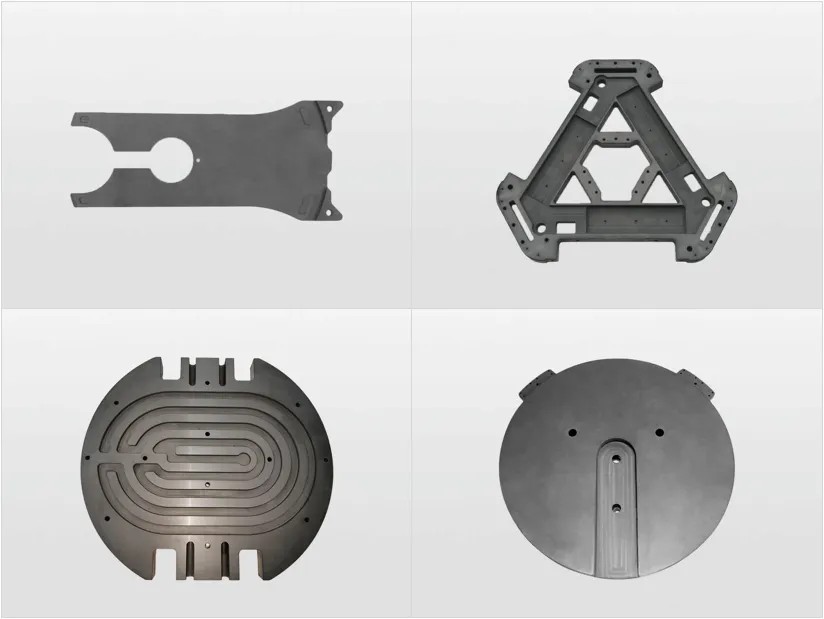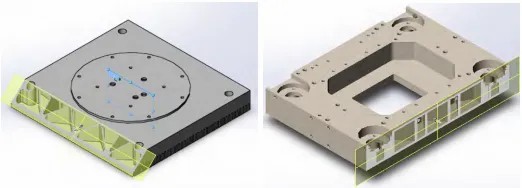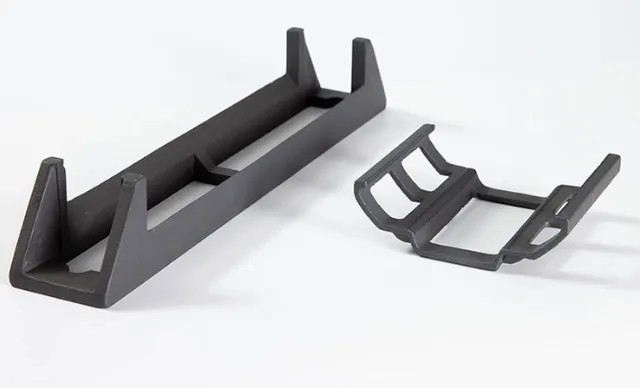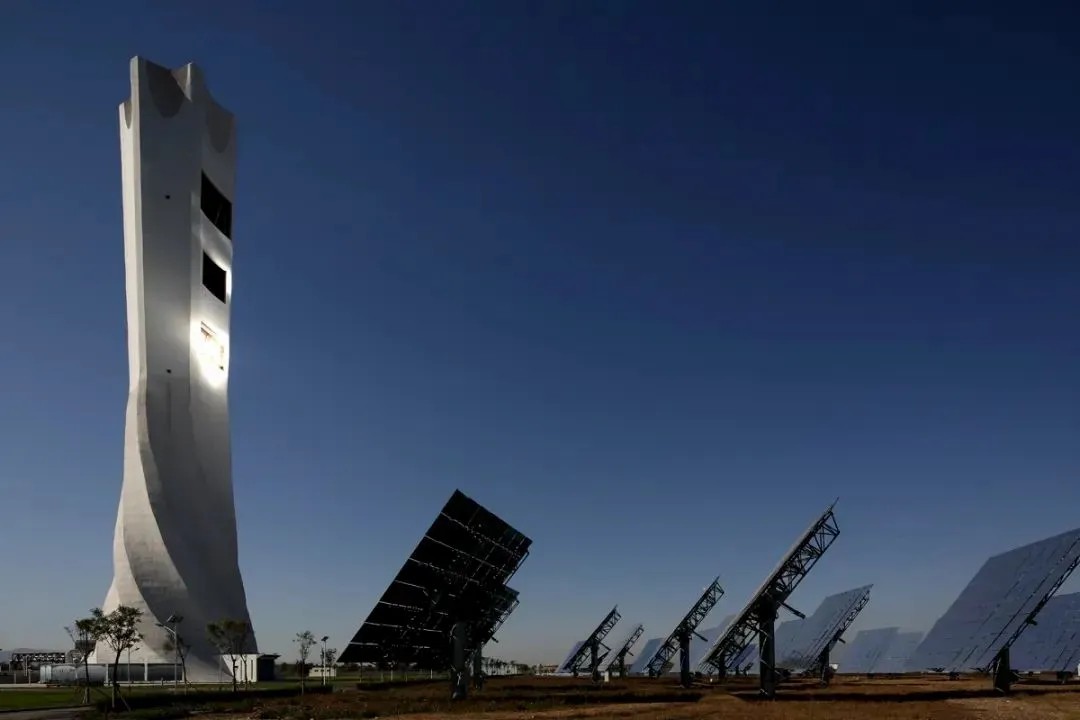
- English
- Español
- Português
- русский
- Français
- 日本語
- Deutsch
- tiếng Việt
- Italiano
- Nederlands
- ภาษาไทย
- Polski
- 한국어
- Svenska
- magyar
- Malay
- বাংলা ভাষার
- Dansk
- Suomi
- हिन्दी
- Pilipino
- Türkçe
- Gaeilge
- العربية
- Indonesia
- Norsk
- تمل
- český
- ελληνικά
- український
- Javanese
- فارسی
- தமிழ்
- తెలుగు
- नेपाली
- Burmese
- български
- ລາວ
- Latine
- Қазақша
- Euskal
- Azərbaycan
- Slovenský jazyk
- Македонски
- Lietuvos
- Eesti Keel
- Română
- Slovenski
- मराठी
- Srpski језик
Analyzing the Applications and Development Prospects of SiC Ceramics in the Semiconductor and Photovoltaic Sectors
2024-09-09
Silicon carbide (SiC), as an important high-end ceramic material, has excellent properties such as high-temperature resistance, corrosion resistance, wear resistance, high-temperature mechanical strength, and oxidation resistance. These properties make it highly promising for applications in high-tech fields such as semiconductors, nuclear energy, defense, and space technology. According to statistics, the market size of silicon carbide ceramics in China reached 15.656 billion RMB in 2022, while the global market size was 48.291 billion RMB in the same year. Considering the industry development environment and market dynamics, it is expected that the global silicon carbide ceramics market will grow at a compound annual growth rate (CAGR) of 6.37% during the forecast period, with the total market size anticipated to reach 69.686 billion RMB by 2028. The following is an analysis of the applications and prospects of silicon carbide ceramics in the semiconductor and photovoltaic sectors.

Semicorex SiC Ceramic Components for Semiconductor and Photovoltaic Equipment
What Roles Do Silicon Carbide Ceramic Precision Components Play in Semiconductor Equipment?
Silicon Carbide Ceramic Grinding Discs: If grinding discs are made from cast iron or carbon steel, they have a short lifespan and a high coefficient of thermal expansion. During the processing of silicon wafers, especially during high-speed grinding or polishing, the wear and thermal deformation of the grinding discs make it difficult to ensure the flatness and parallelism of the silicon wafers. Using silicon carbide ceramic grinding discs, which are highly hard and have minimal wear, with a thermal expansion coefficient similar to that of silicon wafers, allows for high-speed grinding and polishing.
Silicon Carbide Ceramic Fixtures: During the production of silicon wafers, high-temperature heat treatment is often required. Silicon carbide fixtures are used for transportation due to their heat resistance and durability. They can also be coated with diamond-like carbon (DLC) to enhance performance, reduce wafer damage, and prevent contamination.
Silicon Carbide Workpiece Stages: For example, the workpiece stage in a photolithography machine is responsible for completing exposure movements. It requires high-speed, large-stroke, six-degree-of-freedom nanometer-level ultra-precise motion. For a photolithography machine with 100nm resolution, 33nm overlay accuracy, and 10nm line width, the workpiece stage positioning accuracy must reach 10nm, with mask-wafer simultaneous stepping and scanning speeds of 150nm/s and 120nm/s respectively. The mask scanning speed should be close to 500nm/s, and the workpiece stage must have very high motion accuracy and stability.

Schematic Diagram of the Workpiece Stage and Micro-movement Stage (Partial Cross-section)
How Will the Billion-Dollar Semiconductor Equipment Market Drive the Development of Silicon Carbide Ceramics?
According to SEMI (the International Semiconductor Industry Association), wafer fab construction has driven the total sales of semiconductor equipment to surpass the $100 billion mark for two consecutive years. In 2022, the global semiconductor equipment sales reached approximately $108.5 billion. While semiconductor equipment may appear to be made of metal and plastic, it contains many highly technical precision ceramic components. The use of precision ceramics in semiconductor equipment is far more extensive than one might imagine. Therefore, with the robust growth of the semiconductor industry in China, the demand for high-end ceramic structural components will continue to increase. Silicon carbide, with its excellent physical and chemical properties, has broad application prospects in critical equipment components for integrated circuits.
How Are Silicon Carbide Ceramics Applied in the Photovoltaic Sector?
In the photovoltaic industry, silicon carbide ceramic boats are becoming a crucial material in the production process of photovoltaic cells due to the high growth of the industry. The market demand for these materials is increasing. Currently, quartz materials are commonly used for boats, boat boxes, and tubes. However, due to the limitations of domestic and international high-purity quartz sand sources, the production capacity is small, and high-purity quartz sand has a tight supply-demand relationship with long-term high prices and short lifespans. Compared to quartz materials, silicon carbide material boats, boat boxes, and tube products have good thermal stability, do not deform under high temperatures, and do not release harmful pollutants, making them an excellent substitute for quartz products. They have a lifespan of over one year, significantly reducing usage costs and production line downtime for maintenance, leading to notable cost advantages and broad application prospects in the photovoltaic field.

How Can Silicon Carbide Ceramics Be Used as Absorber Materials in Solar Power Systems?
Tower solar thermal power generation systems are highly regarded for their high concentration ratios (200~1000 kW/m²), high thermal cycle temperatures, low thermal losses, simple systems, and high efficiency. The absorber, a core component of the tower solar thermal power generation system, needs to withstand radiation intensities 200-300 times stronger than natural light, with operating temperatures exceeding 1000°C. Therefore, its performance is critical for the stability and efficiency of the thermal power generation system. Traditional metal absorbers have limited operating temperatures, making ceramic absorbers a new focus of research. Alumina ceramics, cordierite ceramics, and silicon carbide ceramics are commonly used as absorber materials. Among them, silicon carbide ceramics have superior high-temperature performance compared to alumina and cordierite ceramic absorbers. Silicon carbide absorbers can achieve an outlet air temperature of up to 1200°C without material degradation.

Solar Thermal Power Plant Absorber Tower
What Are the Market Growth Prospects for Silicon Carbide Ceramics in the Photovoltaic Industry?
Currently, the photovoltaic penetration rates of major global economies are steadily increasing. Under the guidance of national policies and driven by market demand, with the significant decrease in the cost of photovoltaic power generation, it has become the most economical power source globally. According to the International Energy Agency (IEA), the global photovoltaic installed capacity is expected to grow at a CAGR of 21% from 2020 to 2030, reaching nearly 5 TW, with photovoltaic accounting for 33.2% of the global power installed capacity, up from 9.5%. In 2022, global photovoltaic manufacturing capacity increased by more than 70%, reaching nearly 450 GW, with China accounting for over 95% of the new capacity. In 2023 and 2024, global photovoltaic manufacturing capacity is expected to double, with China again accounting for 90% of the increase. According to the China Photovoltaic Industry Association, the production of photovoltaic cells in China has shown continuous growth from 2012 to 2022, with an annual compound growth rate of 31.23%. As of June 2023, the cumulative installed photovoltaic capacity in China was approximately 470 million kW, making it the second-largest power source in China, only behind coal power. The strong demand for new installations continues to drive the growth of photovoltaic cell demand, pushing up the replacement demand for silicon carbide boats and boat boxes in the photovoltaic industry. It is predicted that by 2025, silicon carbide structural ceramics used in the semiconductor and photovoltaic industries will account for 62%, with the photovoltaic sector’s share rising from 6% in 2022 to 26%, making it the fastest-growing field. The high stability and mechanical properties of silicon carbide ceramics are expanding their application range. As the industry’s demands for high precision, high wear resistance, and high reliability of mechanical components or electronic devices increase domestically and internationally, the market development potential for silicon carbide ceramic products is enormous.**
We at Semicorex specialize in SiC Ceramics and other Ceramic Materials applied in semiconductor manufacturing, if you have any inquiries or need additional details, please don't hesitate to get in touch with us.
Contact phone: +86-13567891907
Email: sales@semicorex.com




